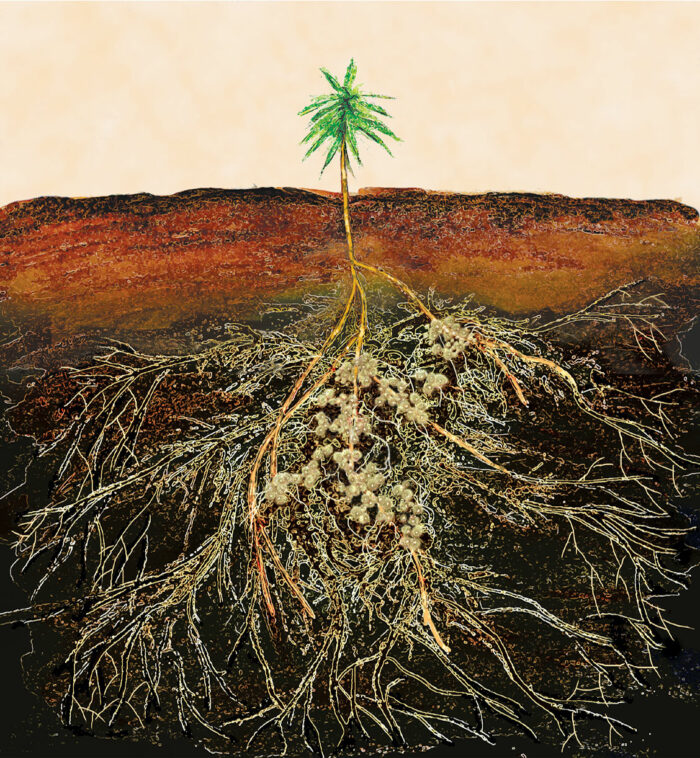
One of the most valuable organisms your soil can have is a fungus known as mycorrhizae, which means “fungus root” in Greek. The full name of the fungus will really make an impression at your next cocktail party: vesicular-arbuscular mycorrhiza (VAM), a fancy name for a fungus that every gardener should know intimately.
Learn more: Healthy Soil Is at the Heart of a Thriving Garden
What is mycorrhizae and how does it benefit your plants?
Mycorrhizae are fungi that establish a graceful, symbiotic relationship with the roots of most plants. They invade the roots of vegetables, flowers, shrubs, and trees; connect them, one to the other; and then send out their filaments, called hyphae, as much as 200 times farther into the soil than the roots they colonize. Mycorrhiza has the ability to better mine this wider area for water and nutrients, especially phosphorus, which it transmits back to the roots. The plant pays for this service with the glucose the fungus needs.
This extended feeding area makes mycorrhizae-associated plants just plain healthier. They have better root formation as well as fewer root diseases and other soil pest problems. They also require less moisture and fertilizer, while showing an increased tolerance to salt.
Avoid tilling and over fertilizing, but don’t be shy about adding compost
The key to this wonderful, subterranean environment is the undisturbed labyrinth of hyphae. Tilling and even simple hoeing can rip apart this delicate lace, which can then take months or even years to reestablish. When tilling is a yearly event, the fungus will never get a foothold. Too much synthetic fertilizer can also damage the fungus, as can pesticides and, of course, fungicides. Solarizing your soil (covering it with clear plastic to let the sun’s heat kill weeds and insects) will also destroy mycorrhizae.
Soils high in organic matter are where mycorrhizae flourish, so adding compost is one of the best ways to encourage the establishment and growth of the fungi. Rather than digging in organic matter, which will destroy the fungal net, lay the compost on top of the soil and let it naturally decay into the soil.
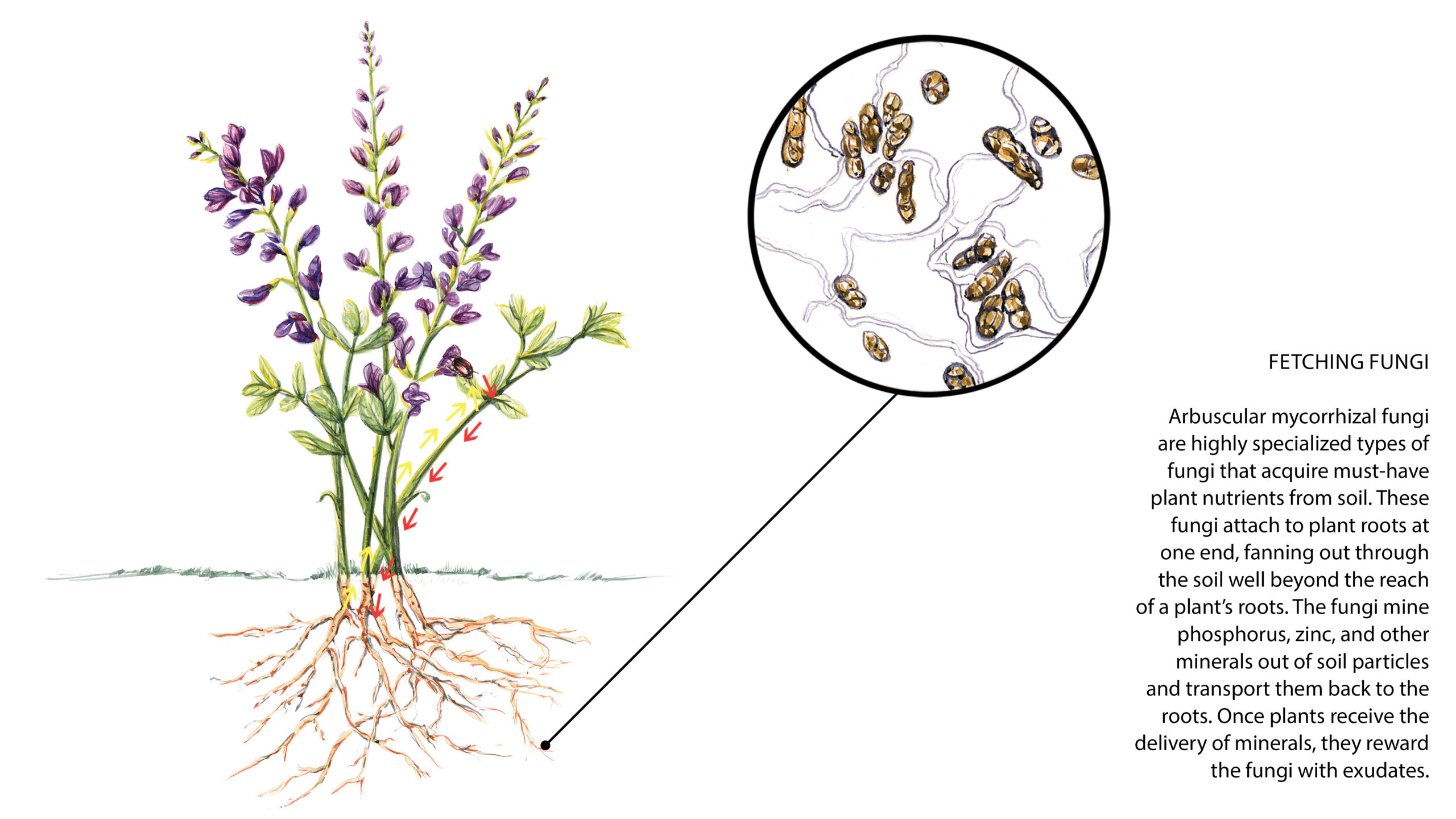
Purchasing Mycorrhizal Products Can Improve Lean Soil
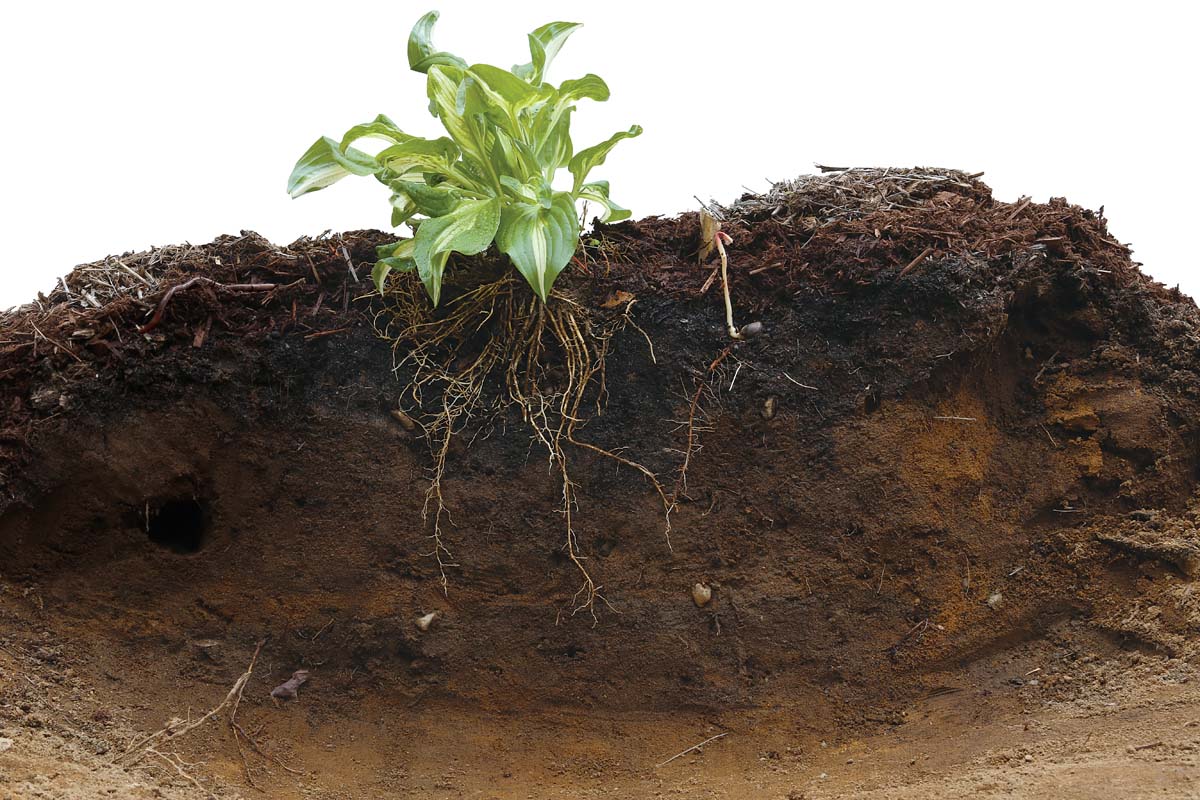
Some gardeners don’t like to find toadstools in their garden, but those mushrooms that pop up around the bases of your pine trees are telling you something. When the soil is moist and the air is cool, the fungi that appear aboveground to distribute their spores are a sign of the naturally occurring mycorrhizal relationship that exists underground between the roots of many kinds of plants and the fungi that surround them.
Although these fungi naturally occur in the soil, it may take weeks or years for them to establish themselves. Since mycorrhizal fungi cannot exist in disturbed soil, you can introduce them to a plant by applying an inoculant. Here are a few things to keep in mind when using these products:
- Inoculant products may include a combination of different kinds of fungal spores because many strains of mycorrhizae are plant specific. Products that contain a mix of many different fungi have a greater chance of matching with your plant.
- These inoculants can be purchased at garden centers and nurseries.
- Mycorrhizae products come three different ways—powdered, a liquid dip, or granular. To apply, either coat the wet roots with the powder before planting, water the liquid in directly around the bases of already established trees, or sprinkle the granules directly into the planting hole before placing in the rootball.
- Be sure to read the guidelines printed on the manufacturer’s package before applying. Like with all gardening additives or amendments, too much or too little of a product can be detrimental to your plants.
Learn more:
Learn How to Support Soil Life
Put the Life Back Into Your Soil
Fine Gardening Recommended Products

A.M. Leonard Deluxe Soil Knife & Leather Sheath Combo
Fine Gardening receives a commission for items purchased through links on this site, including Amazon Associates and other affiliate advertising programs.

Fort Vee - Organic Potting Soil Mix
Fine Gardening receives a commission for items purchased through links on this site, including Amazon Associates and other affiliate advertising programs.

Chapin International 10509 Upside-Down Trigger Sprayer
Fine Gardening receives a commission for items purchased through links on this site, including Amazon Associates and other affiliate advertising programs.

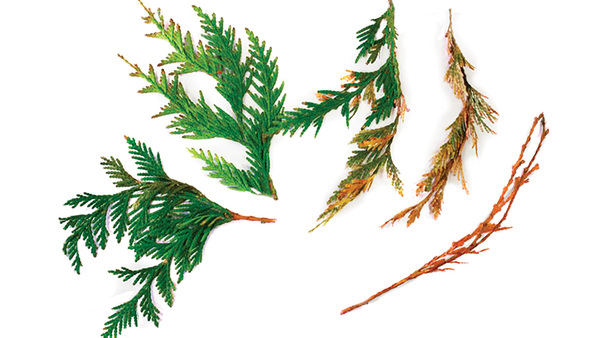
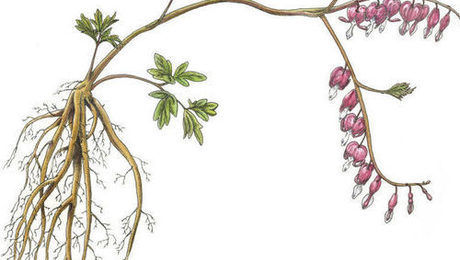














Comments
Log in or create an account to post a comment.
Sign up Log in